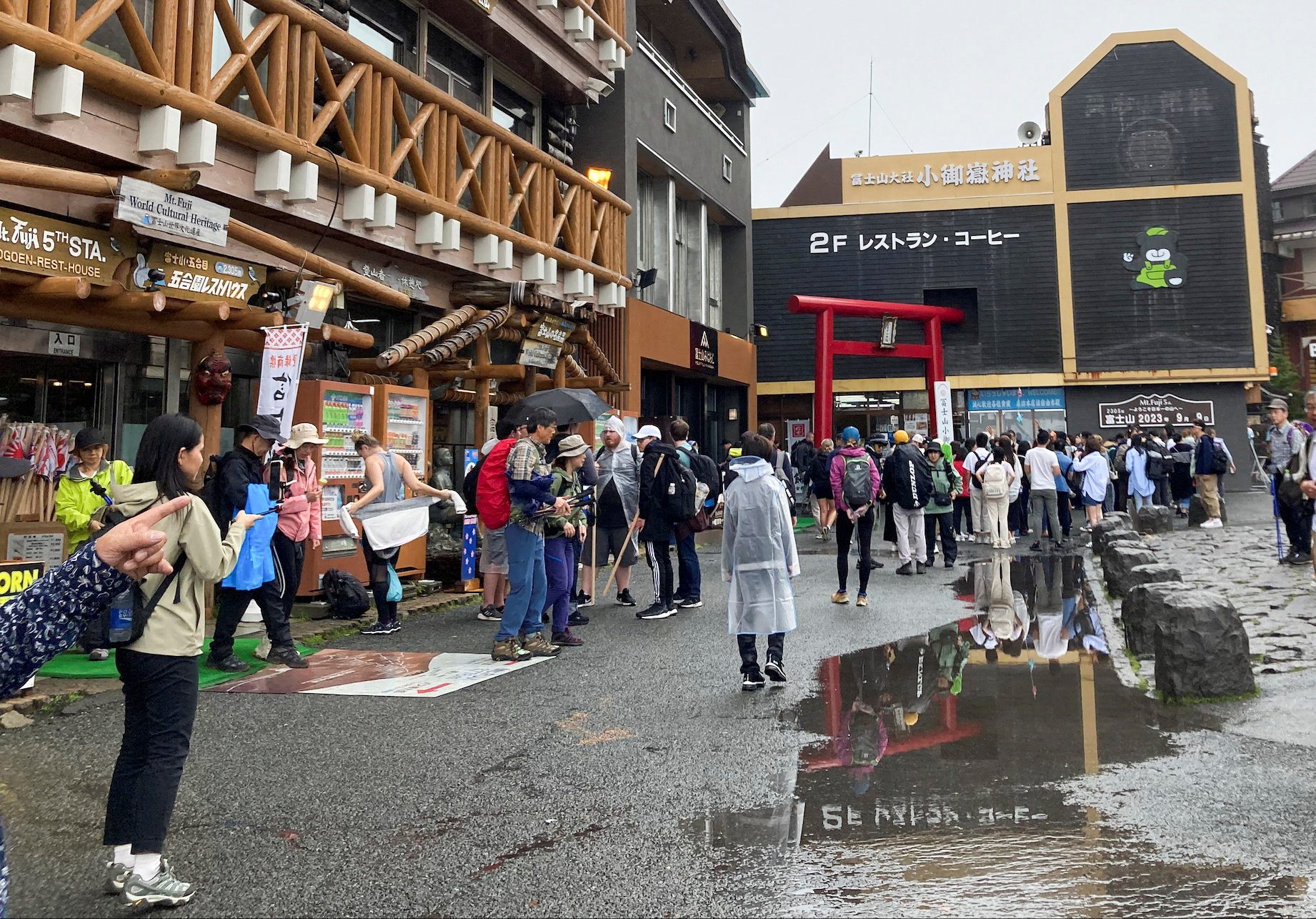SUMMARY
This is AI generated summarization, which may have errors. For context, always refer to the full article.

FUJIYOSHIDA, Japan – On a grey, rainy Saturday, September 9, a steady stream of tour buses arrive at a base station of Japan’s Mount Fuji, depositing dozens of lightly dressed foreign tourists in front of souvenir shops and restaurants.
The scene evokes a theme park image, not the veneration most Japanese would expect below the 3,776-meter (12,388-feet) mountain worshipped as sacred by the Japanese, and a source of pride for its perfectly symmetrical form.
“Hey, no smoking here!” a souvenir store attendant barked, addressing a man dressed in shorts and holding a can of beer in front of the red “torii” gate symbolizing the entrance to the Shinto shrine up ahead.
Mount Fuji, which straddles Yamanashi and Shizuoka prefectures in eastern Japan, has always been popular with local and overseas tourists.
But a recent surge in inbound tourists to Japan has led to extreme levels of pollution and other strains, authorities say, adding they may be forced to take drastic measures such as restricting the number of visitors by making the mountain only accessible by a yet-to-be-built tram system.
“Fuji faces a real crisis,” Masatake Izumi, a Yamanashi prefecture official told reporters during a tour for foreign media on Saturday, the last weekend before the trails close for the year.
“It’s uncontrollable and we fear that Mt. Fuji will soon become so unattractive, nobody would want to climb it,” he said.
Mt. Fuji was listed as a UNESCO World Heritage site 10 years ago, further boosting its popularity. But the distinction came with conditions that Japan reduce overcrowding, environmental harm from visitors, and fix the artificial landscape, such as the large parking lots constructed to accommodate tourists.
However, overcrowding has worsened. “Subaru,” the fifth and largest base station, had about 4 million visitors this summer, a 50% jump from 2013.
Despite the frenetic pace of cleaning by janitors, businesses, and volunteers, social media is rife with posts about soiled bathrooms and mounds of litter along the climbing path.
Izumi worries that the International Council on Monuments and Sites (ICOMOS), which advises the World Heritage Committee, could come knocking any day to ask for an update.
“Bullet climbing,” where climbers attempt to scale Japan’s tallest peak for sunrise and descend on the same day, is also a growing headache, authorities say.
Rescue requests totalled 61 this year, up 50% from last year, with non-Japanese tourists accounting for a quarter, according to Shizuoka prefecture police. An official said most were poorly equipped, suffering hypothermia or altitude sickness. Yamanashi police had no comparable data.
One local visitor said restrictions may be inevitable.
“Any Japanese person would want to climb Mt. Fuji at least once in their life,” said 62-year-old Jun Shibazaki, who arrived on a tour. “But it’s so crowded. Limited entry might be something we have to live with.” – Rappler.com
Add a comment
How does this make you feel?
There are no comments yet. Add your comment to start the conversation.